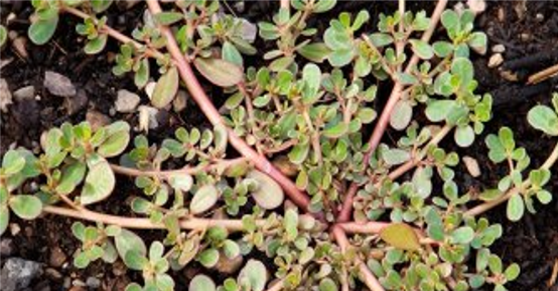Purslane, what a great addition to a diet
I had this article sent to me by a friend and I know this is a bit random for us, but it is such a common weed for such a powerful medicinal plant. Most of you know I am a mad keen gardener and my real passion is growing food. Given how common this plant is, I thought you might find it interesting.
Many people pull this plant from their gardens thinking it is a nuisance weed. But it actually has many health benefits and is popular in several cuisines around the world.
It has it’s origins in Persia and India but is now common throughout the world and it is now believed that it can provide us with various health benefits.
Studies have shown that it has a higher level of beneficial antioxidants than spinach (i) and greater concentrations of omega-3 fatty acids than some fish oils whilst having the additional advantage of being suitable for vegans and vegetarians.
Antioxidants are hugely beneficial to our health helping to reduce heart disease, atherosclerosis , cancer, memory loss, and age-related vision loss as well as boosting our immune systems (ii).
Omega-3 fatty acids are recognized as playing a role in the reduced risk of rheumatoid arthritis, Alzeimer’s disease and dementia, asthma, heart disease and depression (ii).
It is an extremely rich source of vitamin A, which again can protect against certain types of cancer and improve eye health. A serving of 100g of Purslane can provide as much as 44% of the recommended daily intake of vitamin A.
Purslane also contains vitamins C, and B-complex including riboflavin, pyridoxine, and niacin, carotenoids, and several trace minerals including iron, magnesium, and calcium.
Purslane starts to lose its nutritional qualities immediately after harvesting. If you don’t have a big garden or if you fear that planting purslane will take over your entire vegetable garden, try growing it indoors as a microgreen. All you need is an empty container, some potting soil, organic purslane seeds and a sunny window sill. Simply sow the seeds, keep the soil moist (but avoid over-watering), and watch your micro-purslane grow!
In the Middle East it is common to find this plant being sold in bundles in the local markets and used in many dishes. It is considered to be a ‘cooling’ food in hot climates.
It is also widely used in some Mediterranean dishes. You can sauté it with onions, garlic and tomatoes or make a salad with olive oil and fresh squeezed lemon juice. Or it makes a health boosting ingredient to add to soups or smoothies. Suddenly it doesn’t sound like a weed anymore!
Please note that pregnant women are commonly advised to avoid eating purslane.
Thankyou
http://www.naturalcuresnotmedicine.com/2014/07/just-weed-unrecognized-health-boosting-plant.html
SOURCES/REFERENCES:
(i) http://www.ncbi.nlm.nih.gov/pubmed/1354675
(ii) http://www.webmd.com/cancer/features/antioxidants-omega3s
If you think this information is educational for other please help others stumble across this information by using one of the sharing buttons on this site.. We appreciate all of your support and hope to see you again soon.

